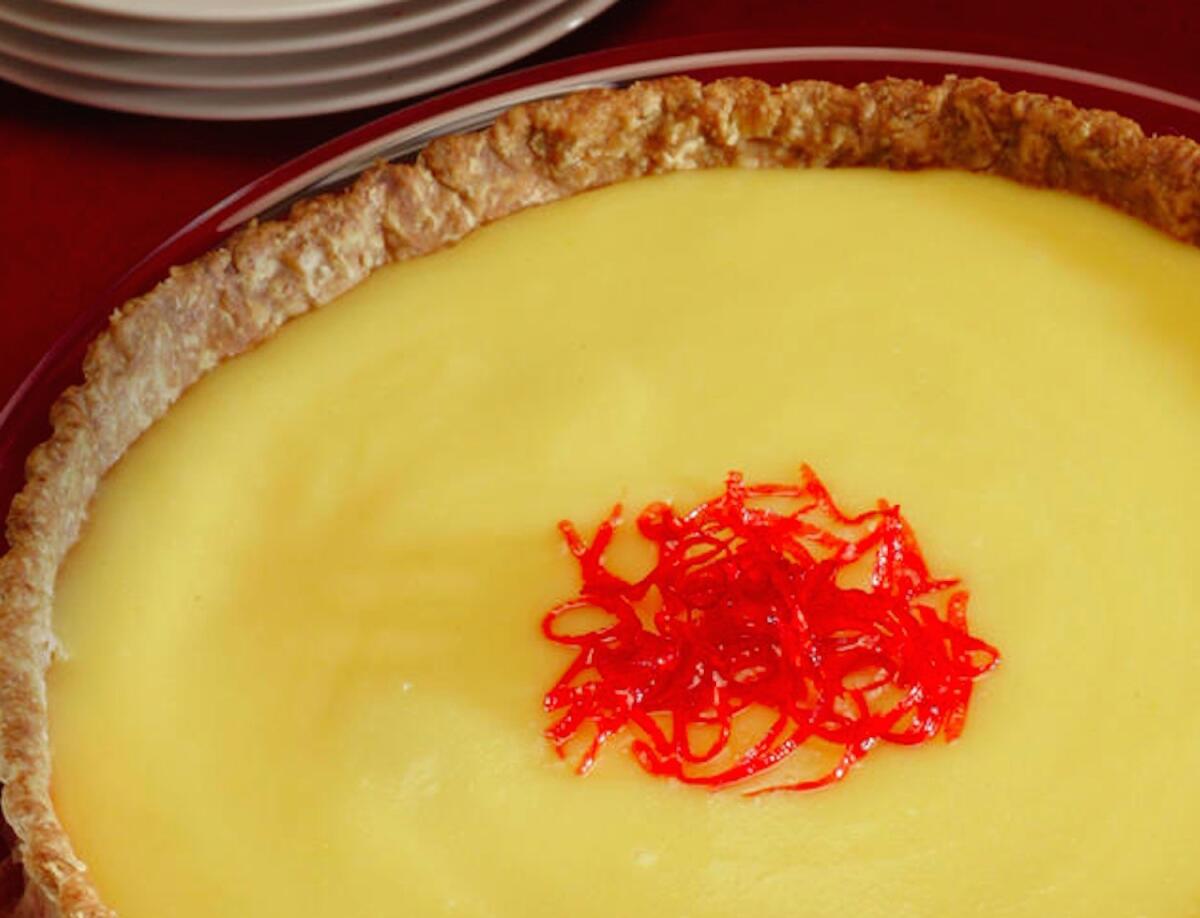How to make the perfect lemon curd, or grapefruit, or lime or orange

When the markets are stacked as high with delicious citrus as they are right now, it’s probably a cook’s responsibility to use it as much as possible. But what to do with another half-dozen Meyer lemons?
In times like these, curd is the word.
A great curd captures the best of the perfume of fresh lemons and marries it with the suave flavor of sweet butter. It’s rich and creamy. It’s tart and fresh. And it’s hard to imagine a better pairing.
Need more encouragement? You can make it in 20 minutes in a single pot. You need just four ingredients. And if you’ve got navel oranges, grapefruit, limes or almost any other kind of citrus, the same recipe works just as well.
You’ll find a lot of different curd recipes, but this is one I perfected over several days of trying different techniques and ratios of ingredients.
Here’s what you do:
Beat eggs, egg yolks and sugar together until they’re creamy and light.
Add lemon juice and zest and butter and cook over medium heat, stirring frequently.
Turn the heat down to low and keep cooking, again stirring constantly, until the mixture is thick enough to coat the back of a spoon.
Pass the mixture through a strainer into a chilled bowl and cool to room temperature.
That’s it.
The recipe is based on a neat little twist of science having to do with the coagulation of proteins (if you’re not into geek talk, just stop here and get cooking).
Typically, with pure egg, the white begins to set between 145 and 150 degrees and is firm at 160 degrees. By 180 degrees, the protein strands have tightened to the point that all the liquid is wrung out. (Egg proteins are not alone in this behavior; that’s what happens when you overcook a chicken breast too.)
That 145-to-160-degree window is pretty hard to hit, especially over a live flame, which is precisely why perfectly scrambled eggs are such a miracle. Add sugar, however, and an interesting thing happens. The window opens wider. The sugar isolates the protein strands, moving them farther from each other and keeping them apart longer. This raises the temperature at which they coagulate.
It’s the same thing that happens when you make zabaglione, cooking egg yolks and sugar.
Like I said, you can make curd with different kinds of citrus. Though lemon is the exemplar (and Meyer lemon even better), lime is very good too, with pointed acidity and a slightly grassy, herbal quality. Orange is softly acidic and delicately floral.
I’ve tried blood oranges, too, and that was the only wash-out. When cooked, the vivid red color faded to a bruised purple and the intriguing berry quality became nasty and artificial-tasting.
What do you do with curd once you’ve made it?
Traditionally it’s used like a jam, spread on toast or muffins. Or used as a filling for cookies.
But when you’ve got a really great curd, its highest and best calling is in a tart.
We’ve got recipes for two kinds in our California Cookbook, both Meyer lemon (with a very pretty garnish made from the zest), and pink grapefruit, topped with chopped pistachios.
Are you a food geek? Follow me on Twitter @russ_parsons1
More to Read
Eat your way across L.A.
Get our weekly Tasting Notes newsletter for reviews, news and more.
You may occasionally receive promotional content from the Los Angeles Times.









